

7 August 1826 in Kuopio/Finland, † 20 November 1889 in Helsinki/Finland.
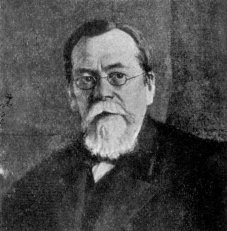 Scholar of Finno-Ugric languages, considered, together with József Budenz, to be the real founder of Finno-Ugric linguistic studies as a regular academic discipline. Ahlqvist became professor for Finnish Language and Literature at the University of Helsinki in 1863, was rector of this University from 1884 to 1887, and retired in 1888.
Scholar of Finno-Ugric languages, considered, together with József Budenz, to be the real founder of Finno-Ugric linguistic studies as a regular academic discipline. Ahlqvist became professor for Finnish Language and Literature at the University of Helsinki in 1863, was rector of this University from 1884 to 1887, and retired in 1888.
As a student of M. A. Castrén, he adopted the principles of comparative linguistics. In 1854 and 1855 he travelled through Karelia, Ingria and Estonia, researching local Finnic languages. As a result of these journeys he published descriptions of Vote (1856) and Veps (1859). Ahlqvist’s next destinations were the middle reaches of the Volga and the Ob river basin in the years1856 to 1859. On this expedition he collected materials from Mari, Mordvin, Chuvash, Tatar, Mansi and Khanty. His studies on Moksha Mordvin (1861) were the first scholarly works on this language. Later, in 1877 and 1880, Ahlqvist made two more journeys to the Mansi and Khanty.
Ahlqvist promoted Finnish studies, writing several pioneer works on various subjects. He was, for example, the author of the first comprehensive study on Finnish metrics (1863a), as well as on derivation and nominal inflection (1877). His monograph on the history of Finnic cultural words (1871) was the first attempt to determine the age and origin of these words and then to elucidate, by means of this vocabulary, the prehistory of the Finns (cf. a corresponding study on Ob-Ugric, 1882). Ahlqvist was the first scholar to falsify the popular idea of Chuvash as a Finno-Ugric language and wrote the first modern scientific comparative study of Finnish and Hungarian (1863b). The Society for the Study of Finnish (Kotikielen Seura), publisher of the most important linguistic periodical in Finland, Virittäjä, was founded in 1876 at Ahlqvist’s suggestion.
In addition to his linguistic work Ahlqvist was an influential language planner, the leading literary critic of his age in Finland, and, under the pen name A. Oksanen, a poet.
(Mikko Korhonen; revised by Johanna Laakso and Tim Riese)
Links:
Works (selection):
Literature about Ahlqvist:
*2 December 1813 in Tervola/Finland, † 7 May 1852 in Helsinki/Finland.
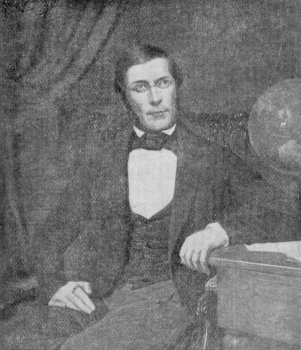 Explorer, Uralic linguist, founder of Samoyedology and Siberian anthropological linguistics.
Explorer, Uralic linguist, founder of Samoyedology and Siberian anthropological linguistics.
In order to explore the eastern Uralic languages Castrén undertook two long expeditions to Northeastern Europe and Siberia. When the professorship of Finnish Language and Literature was founded at the University of Helsinki, Castrén became the first holder of this chair in 1851.
As a student of languages in Helsinki, Castrén became familiar with the work of R. Rask, thus coming upon the idea of applying the comparative method to the Finnish languages. In his docent thesis (1839), Castrén showed the elements of common origin, e.g. consonant gradation, in the declension of Finnish, Estonian, and Saami.
On the initiative of A.J. Sjögren, and with the financial support of the Finnish Treasury, Castrén undertook a linguistic and ethnographic expedition in 1841 to 1844 through Finnish and Russian Lapland and northern Russia to the river Ob, studying Saami, Komi and Nenets on the way, and writing e.g. a Komi grammar (1844a). After falling ill, he was forced to return to Helsinki, but having recovered he traveled back to Siberia in 1845, this time commissioned by the Imperial Academy of Science in St. Petersburg. On this expedition he studied several indigenous languages and peoples in Siberia, especially in the river basins of the Ob and Yenisey, extending his journey far into the mountains of Sayan and beyond Lake Baikal. When Castrén returned to Helsinki in 1849, he had collected vast materials in Khanty and all five extant Samoyedic languages, as well as in several Turkic, Tungus and Mongol languages, in addition to which he had discovered the Ket and Kot languages.
On this journey Castrén elaborated his theory on the relationship between the Finno-Ugric, Samoyedic and Altaic languages and peoples, as well as on their original homeland (Urheimat) in the Altai and Sayan Mountains (1846, 1850).
In his last years Castrén worked on his data collections intensively, publishing a Khanty grammar (1849) and preparing a large grammar of the Samoyedic languages. After Castrén’s death, F. A. von Schiefner assumed the responsibility for Castrén’s unpublished papers and edited Castrén’s collected works in a 12-vol. series (1853–62).
On the basis of the data collected on his journeys Castrén demonstrated the affinity of the Finno-Ugric and Samoyedic languages, although his theory on the relationship between the Uralic and Altaic languages has remained unverified. His descriptions of numerous Siberian languages have retained their value as sources of data up until the present. Castrén served as a model for numerous scholars undertaking linguistic and ethnographic research journeys later to Uralic peoples.
(Mikko Korhonen; revised by Johanna Laakso and Tim Riese)
Links:
Works (selection):
Literature about Castrén:
*April 1, 1888 in Helsinki, Finland, † February 12, 1935 in Helsinki.
 Linguist, anthropologist and ethnographer.
Linguist, anthropologist and ethnographer.
He was the son of Otto Donner, who formulated the first family tree of the Finno-Ugric languages and was the founder of the Finno-Ugric Society. He obtained university degrees in 1914 and 1921, followed by a doctorate in 1923. In 1924 he became associate professor for Uralic languages at the University of Helsinki.
After studying in Helsinki, Budapest and Cambridge, his first expedition in 1911-1913 led to the Selkup between Tomsk and Krasnojarsk, where in the area of Kansk Kamas was still spoken. The journey led from Tomsk to Krasnojask (Selkup), along the Ket and Yenisei (Nganasan) towards Turukhansk and Dudinka (Nganasan, Yakuts, Dolgan and Tunguz) and finally along the Tas back to the Ob. His second expedition to the Kamas in 1914 was terminated due to the beginning of World War I.
Back in Finland, he was a reserve officer in the Finnish independence war of 1918, gained honors in the Jäger Movement, and was a director and industrialist.
Wide parts of his material collection from the years 1911-1914 remained unedited and were not dealt with until the 1960’s by Pekka Sammallahti. Juha Janhunen and Ago Künnap translated and catalogued further portions. In 2004 Jarmo Alatalo published a Selkup dictionary based on the materials of Kai Donner and U. T. Sirelius.
From 1920 to 1922 he was editor of the Suunta-lehti and from 1924 until 1934 associate professor for Uralic languages at the University of Helsinki. In 1932 he became a member of the Finnish Academy of Science and Letters and in 1934 of the Suomen Tiedeseura.
In addition to his linguistic work, Donner was a political activist, and therefore had to remain in Swedish and German exile during 1916-1918. Furthermore, he was a member of the rightist Lapua Movement.
(Maximilian Murmann)
Links:
Works (selection):
Posthumous:
*12 May 1874 in Kylmäkoski/Finland, † 10 March 1943 in Helsinki/Finland.
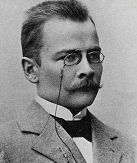 During the beginning of his studies, Kannisto devoted himself to the dialects of his western Finnish homeland. After he graduated in Finnish and Finno-Ugric linguistics, he published his pioneering paper on the grammar of the Häme dialects. In 1901 he embarked on a five-year long expedition to Siberia, where he gathered linguistic and ethnographic data on the main dialects of Mansi. The material was brought to publication with the help of his student Matti Liimola. The works were published posthumously by Liimola. 1922 Kannisto obtained his doctorate with a dissertation on the Vogul vocalism, he worked as an Extraordinary Professor for Finno-Ugric Studies in Helsinki from 1927 until the year of his death.
During the beginning of his studies, Kannisto devoted himself to the dialects of his western Finnish homeland. After he graduated in Finnish and Finno-Ugric linguistics, he published his pioneering paper on the grammar of the Häme dialects. In 1901 he embarked on a five-year long expedition to Siberia, where he gathered linguistic and ethnographic data on the main dialects of Mansi. The material was brought to publication with the help of his student Matti Liimola. The works were published posthumously by Liimola. 1922 Kannisto obtained his doctorate with a dissertation on the Vogul vocalism, he worked as an Extraordinary Professor for Finno-Ugric Studies in Helsinki from 1927 until the year of his death.
Kannisto became known for organising research on the Finnish vernacular and his activities in science policy. Between 1919 and 1935, he worked as the secretary of the Finno-Ugric Society, afterwards becoming its chairman. He developed a program on the systematic publication of material gathered by Finnish explorer. Within this framework, he also published his lexicographic material on the Mansi language. Furthermore, Kannisto maintained intensive contacts with the Hungarian Academy of Sciences. In Finland and Hungary, he received several orders of merit and honorary degrees for his scientific work.
Works (selection):
Posthumous:
Literature about Liimola
*1871 in Kajaani/Finland, † 1919 in Loviisia/Finland.
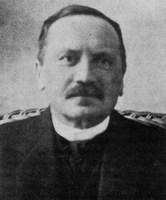 Finnish philologist.
Finnish philologist.
Karjalainen studied Finnish and the Finno-Ugric languages as well as history in Helsinki. During his student years he undertook three field trips to Karelia (1894 White Karelia, 1895 Tver Karelia, 1897 Rukajärvi).
After obtaining his university degree Karjalainen was granted a scholarship for studying the Khanty language. Between 1898 and 1902 he lived in the Khanty language area and studied the major Khanty dialects. His travelogues were published between 1900 and 1903 in several series and later, in 1983, in one volume with the title Ostjakit (The Khanty) by the Finno-Ugrian Society (Suomalais-Ugrilainen Seura).
On these trips Karjalainen collected many texts as well as a large amount of word material, which was published in 1948 in the dictionary edited by Y. H. Toivonen. Karjalainen's collections are still of the utmost importance for modern day researchers, among other things because the Southern Khanty dialects he documented are already extinct.
In his doctoral thesis of 1904, he dealt with the history of Khanty sounds. After the dissertation, Karjalainen worked as an assistant professor at the Historical-Philological Department of the University of Helsinki and starting in 1905 as a private lecturer of Finno-Ugric linguistics. In the same year, he became assistant lecturer in Finnish Language. From 1906 on Karjalainen also acted as the secretary of the Finno-Ugric Society and eventually from 1908 on as assistant professor of Finnish Language and Literature.
In addition to his activities as a linguist, Karjalainen also dealt exhaustively with mythology and the world view of the Ob-Ugrian peoples.
Karjalainen died young, and was unable to publish the better part of the Khanty materials which he collected. This task was undertaken by Edith Vértes (1919-2002).
(Marianne Zehetmaier and Bernadett Bíró)
Works (selection):
*25 May 1903 in Ylöjärvi/Finland, † 6 August 1974 in Ylöjärvi/Finland.
Matti Engelbert Liimola was born to a peasant family with 11 children on the 25th of May, 1903. He spend his childhood on the shore of Lake Näsijärvi in the parish of Ylöjärvi. He went to school in Tampere, where he took the matriculation examination in 1924. Liimola was accepted to study Germanic philology at the University of Helsinki in the autumn of 1925. Other disciplines of study included Finnish language and literature, Roman literature and Finnish and comparative folkloristics. Finno- Ugrian linguistics did not part of his selection of disciplines, it is, however, known that he followed professor Artturi Kannisto’s lectures of the Vogul language. Liimola graduated in 1930. In the academic year 1930–31, he studied at the renouned Eötvös Loránd kollégium in Budapest. It is said that there he read through four volumes of the comprehensive Mansi folklore collection Vogul Népköltési Gyűjtemény (1892– 1921) by Bernát Munkácsi, which tells of his selection of career and determination. Aging Kannisto recruited this eager pupil as his assistant to edit his fieldwork material, and Liimola’s assignment as a holder of a scholarship from the Finno- Ugrian Society began in 1933. In the same year he presented his first paper in the monthly meeting of the FUS. They worked together until professor Kannisto died in 1943. At that time World War II broke the editing, as Liimola had to go to the front, partly as an ordinary soldier, partly for special duty in general headquartes. After the war, Liimola continued with a full-time scholarship from the FUS until 1963 and later being pensioned with a part-time scholarship from 1970 until he died on the 6th of August, 1974.
In 1962 a new professorship of Finno-Ugrian linguistics was established at the University of Turku. Many colleagues of Liimola pleaded with him and he became convinced that it was his duty to apply for the position. Since he was a remarkably competent researcher of the Mansi language, he wrote his doctoral thesis very quickly and defended it after his 60th anniversary in the autumn of 1963. The title of the thesis was ”Zur historischen Formenlehre des Wogulischen I. Flexion der Nomina” (MSFOu 127). In the study the development of different morphological elements of Mansi were traced far into kindred languages. The number markers, cases of nominal paradigms, and other forms, as well as the history and origin of possessive suffixes in Mansi language were dealt with a new and convincing manner. Since the monograph had a consistent outline and was written in a lucid style, it served as a model for later studies. Liimola was appointed professor in the spring of 1964. His career at the University of Turku did not last long but while he was there, in 1965, he established the Department of Finno-Ugrian Studies. Starting in 2010, after the integration of several departments in the Turku University, the department has become part of a larger unit called the School of Languages and Translation Studies in the Faculty of Humanities.
Although Liimola never crossed the Ural Mountains, his daily work with Mansi materials was so effective that he, in the course of time, learned to speak the language fluently. He was well-versed in not only the Mansi materials collected by all of Kannisto’s predecessors but, also the material of textbooks and dictionaries published in the Soviet era. When Kannisto died, the editing of the linguistic material collected by him had reached a very advanced state. The meticulous Liimola was able to publish the first volume of the ”Wogulische Volksdichtung” no earlier than 1951. The last, the sixth volume, was printed in 1963. The six volumes (MSFOu 101, 109, 111, 114, 116, 134), altogether 2826 pages, comprise folklore with German translations. 733 pages consist of over 8500 thorough annotations. The supplementary seventh volume (MSFOu 180), glossary of the previous volumes, was published in cooperation (from 1968) with Vuokko Eiras (née Kulmala) in 1982. The Mansi mythology lectures given by Kannisto were published by Liimola together with E. A. Virtanen as a separate volume under the title ”Materialien zur Mythologie der Wogulen 1958” (MSFOu 113). A comprehensive dictionary of Mansi dialects based on Kannisto’s materials (originally 30 000 wordcards) has been in preparation for decades and in 2012 it has finally reached stage of translation and proof-reading. After Vuokko Eiras’s retirement, the final revision rests on the shoulders of Arto Moisio.
Liimola began his scientific career with small etymological articles, the amount of which approaches 40 (1933–1975). These articles deal with the history of 166 Finno- Ugrian words. Liimola found counterparts for over 100 Ob-Ugrian words in some of the kindred languages. Often the theme is the inner borrowing, many words of Northern Mansi can be explained as borrowings from Northern Khanty. Starting in 1940’s, Liimola began solving questions of Mansi morphology, as well, historical morphology and derivational morphology. The Mansi personal pronouns (1944), derivational suffixes (1949), case marking of the object (1954) and morphology (1956) are all dealt with. The development of nouns into derivational suffixes was compared to similar phenomena in the Hungarian language. Liimola analysed the Mansi object conjugation twice (1968, 1973). The complex declension of Eastern Khanty and the origin of some case endings were the subject of his studies in 1971. Liimola was also circumstantial and competent in evaluating Finno-Ugric works of colleagues. For many decades he was the leading authority in his own field, many came to study under him, especially Hungarian colleagues. Wolfgang Steinitz expresses his gratitude to Liimola without whom ”Dialektologisches und etymologisches Wörterbuch der ostjakischen Sprache” would had been incomplete. Béla Kálmán thanks him in the prologue of his dictionary ”Wogulisches Wörterbuch” (1986) for discussions.
Recording secretary of the FUS 1936–1954.
Additional board member of the FUS 1955–1971.
Reward from the Finnish Cultural Foundation (Suomen Kulttuurirahasto) 1972.
(Merja Salo)
Works (selection):
Books
Selected minor works
Literature about Liimola
*2 January 1865 in Mikkeli/Finland, † 24 August 1919 in Helsinki/Finland.
Paasonen undertook two expeditions to the Finno-Ugric peoples living in Russia. He obtained his doctorate in 1893 and became the professor of Finno-Ugric Linguistic Studies at the University of Helsinki in 1904.
On his research journeys Paasonen studied the Finno-Ugric languages Mordvin, Mari and Khanty, as well as the Turkic languages Chuvash and Tatar. He collected vast lexical, grammatical and text materials from these languages., especially from Mordvin. Most of the texts were published by P. Ravila et al. only after Paasonen’s death. The great lexicon of Mordvin dialects based on Paasonen’s collections. was published in the 1990’s.
Together with E.N. Setälä, Paasonen is one of the pioneers of the Neogrammarian school in Finland. His doctoral thesis on Mordvin historical phonology (1893) is a masterpiece in the application of Neogrammarian methods, as are his works on the historical-comparative phonology and etymology of the Uralic languages. His Beiträge (1917) are the first attempt at a phonological history of the Uralic languages, and for many decades it served as a source book and reference work.
Paasonen was interested in the contacts between Uralic and other languages, studying e.g. Turkic loan-words in Mordvin (cf. 1897) and Khanty (cf. 1902). With his study on the affinity between the Finno-Ugric and IE. language families (1908a) he participated in the discussion which had begun somewhat earlier with H. Sweet and K.B. Wiklund.
Paasonen includes a large number of his own Indo-Uralic word comparisons, but claims that the grammar as well as the lexical similarities are of such a nature and so few in number that they offer no grounds for taking a stand in support of original kinship.
The material collected by Paasonen has retained its value as a research source. Even today, knowledge of the Mordvin dialects is principally based on Paasonen’s work. He is considered to be the founder of modern historical-comparative phonology of the Uralic languages.
(Mikko Korhonen; revised by Johanna Laakso and Tim Riese)
Works (selection):
Literature about Paasonen:
*5. May 1872 in Jääski/Finland, † 24. August 1929 in Helsinki/Finland.
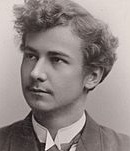
Finnish ethnologist
In 1872, Uuno Taavi Sirelius was born as the son of a chaplain in the Southern Karelian town of Jääski. Until 1891, he attended the classical Lyceum in Vyborg, his Swedish forenames Uno David were Fennicized under the influence of the national awakening. Thanks to his research into local history, Sirelius became an employee of the National Museum of Finland, then known as “Valtion historiallinen museo”.
The Hungarian ethnographer János Jankó piqued Sirelius’ interest in the Khanty people and took him along on an expedition to Siberia. After graduating from university in 1898, he embarked alone to the Uralic people along the banks of the Ob River. This two-year journey was followed up by an expedition to the Permian people in the year 1907. In the same year, he obtained his doctoral degree on methods of fish trapping amongst the Finno-Ugric people.
Besides his occupation as a lecturer for ethnography (1906-1921), he served as an amanuensis for the National Museum of Finland between 1900 and 1918. Later, he was appointed curator and head of the ethnographic department of the “Kansallismuseo”, which was opened to the public in the year 1916. In 1921, he accepted the newly established Chair for Finno-Ugric Ethnology at the University of Helsinki. In the same year, he received an honorary degree from the University of Hamburg.
Due to the protection of Finnish independence that ultimately led to the closure of the border with Russia, Sirelius started to focus on ethnographic aspects of his homeland, especially Finnish tapestry (“Ryijy”). He compiled several exhibitions on Finnish tapestry that made his name known in the rest of Europe.
In the 1920s, Sirelius introduced modern methods to Finnish ethnography: questionnaires, ethnographic movies, village research. In 1929 he died from the consequences of cancer, but his extraordinary influence on Finnish ethnography remained unbroken until the second half of the 20th century.
(Maximilian Murmann)
Links:
Works (Selection):
Posthumous:
Literature about Sirelius:
*19 January 1890 in Koski/Finland, † 16 May 1956 in Helsinki/Finland.
Scholar of Finno-Ugric languages, etymologist.
Toivonen became the assistant of E.N. Setälä while still an undergraduate. In 1927 he obtained his doctorate, and in 1934 he was appointed professor of Finno-Ugric Language Studies at the University of Helsinki. When the Finnish Academy was established in 1948, Toivonen was invited to occupy one of the open chairs for academicians. After Setälä he became director of the research institute Suomen suku in 1935.
As Setälä’s and H. Paasonen’s student, Toivonen adopted Neogrammarian principles, which is clearly evident in his doctoral thesis (1927). Finno-Ugric etymology, with particular emphasis on Khanty, and historical phonetics were the main subjects of his scholarly work. He published e.g. a long series of etymological articles in several numbers of the FUF under the title "Wortgeschichtliche Streifzüge" between 1915 and 1953. On the basis of his intensive etymological research into the Finnish vocabulary at the institute Suomen suku and his work on K. F. Karjalainen’s Khanty materials from 1898–1902 (1948), Toivonen began work on the etymological dictionary of Finnish, compiling Part I (1955) alone, Part II (1958) with Erkki Itkonen and Aulis J. Joki. This etymological work has formed a lasting foundation for subsequent research.
(Mikko Korhonen; revised by Johanna Laakso and Tim Riese)
Links:
Works (selection):
Literature about Toivonen: